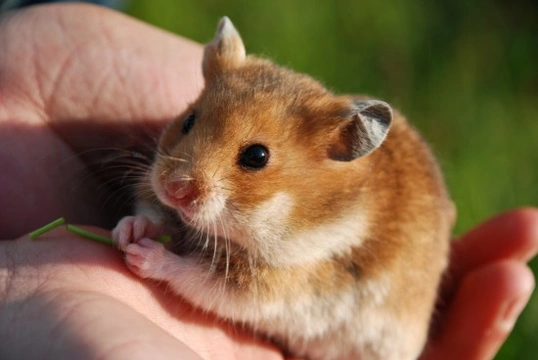
Wet Tail in Hamsters: Causes, Symptoms & Care
Hamsters are delightful and resilient pets, making them a popular choice for first-time owners and children. Generally easy to care for, these lively little rodents bring lots of joy and amusement. However, one serious condition to be aware of is wet tail, a relatively rare but life-threatening illness that requires immediate attention.
Wet tail, also known as proliferative ileitis or transmissible ileal hyperplasia, is a severe intestinal disease affecting hamsters, particularly young ones. It causes inflammation and swelling in the ileum, a part of the intestine, leading to painful symptoms. Importantly, wet tail is often mistaken for ordinary diarrhoea, but the two conditions differ vastly in severity and treatment requirements. While diarrhoea can generally be managed at home, untreated wet tail can be fatal for your hamster.
Understanding Wet Tail: Causes and Contagion
Wet tail is primarily caused by an overgrowth of harmful bacteria, especially Lawsonia intracellularis, in the intestines. Various stress factors often trigger the condition, including:
- Weaning from the mother
- Sudden changes in environment or diet
- Excessive handling or disturbance
- Dirty or overcrowded cages
- Separation from siblings too early
This illness is highly contagious among hamsters and is spread mainly through faecal-oral contact. The incubation period is usually around seven days, meaning symptoms typically appear a week after exposure. Unfortunately, recovering hamsters do not develop immunity and can be re-infected.
Recognising the Symptoms of Wet Tail
Wet tail mostly affects young hamsters shortly after weaning, as stress weakens their immune system. Key symptoms include:
- Lethargy and lack of energy
- Unkempt, matted fur especially around the tail due to severe diarrhoea
- Loss of appetite and rapid weight loss
- Foul-smelling diarrhoea, sometimes with traces of blood
- Hunched posture to relieve abdominal pain
- Crying out due to intestinal pain
- Dehydration leading to sunken eyes and dry skin
Symptoms escalate quickly, so early signs must never be ignored. Immediate isolation of the affected hamster is essential to prevent spread.
Essential Actions for Owners: Treatment and Environment Management
If you suspect your hamster has wet tail, take it to a veterinary specialist in small animals immediately. Prompt treatment significantly improves survival chances.
Veterinarians typically prescribe oral antibiotics such as neomycin to fight the bacterial infection. Treatment also includes strict fluid therapy to combat severe dehydration and vitamin supplements to support recovery. In cases where other hamsters live in the home, vets may recommend adding antibiotics to their water to help prevent spread.
Equally important is environmental hygiene:
- Disinfect cages, bedding, and any accessories thoroughly using safe, small-animal friendly cleaners.
- Dispose of or thoroughly sterilise feeding bowls, water bottles, and toys to eliminate bacteria.
- Wash your hands carefully before and after handling hamsters or cleaning their habitat.
- Keep infected hamsters away from others until fully recovered.
Prevention: Minimising Risk of Wet Tail
Fortunately, wet tail is not common if you practise responsible ownership and maintain a stress-free environment. Here are key preventive measures:
- Buy or adopt your hamster from reputable breeders or rescue centres to ensure good health.
- Keep cages clean and provide fresh bedding regularly.
- Minimise sudden changes in diet or living conditions, especially after weaning.
- Avoid overcrowding and ensure sufficient space and resources for each hamster.
- Handle young hamsters gently and limit stress during early development.
- Quarantine new hamsters for at least two weeks before introducing them to others.
Some hamster species, like the Chinese and Russian dwarf hamsters, are less prone to wet tail, but good care is essential regardless.
Conclusion: Responsible Care Saves Lives
Wet tail in hamsters is a distressing and often fatal illness if untreated, but with prompt veterinary care, hygienic housing, and minimal stress, the risk can be greatly reduced. This condition highlights the importance of understanding your pet’s needs and watching carefully for any signs of illness. Always prioritise early treatment and consult a vet to give your hamster the best chance of recovery and a happy, healthy life.
For those considering bringing a hamster home, connecting with a reputable hamster breeder or rescue centre is a great start to providing a safe and loving environment.



